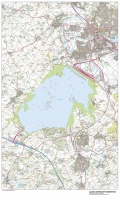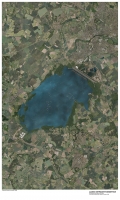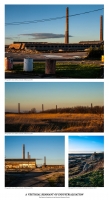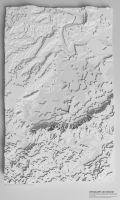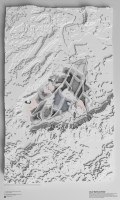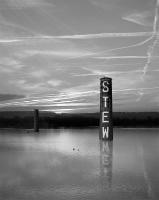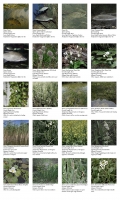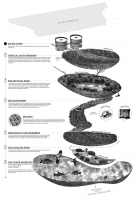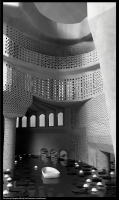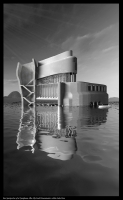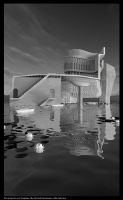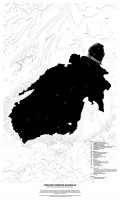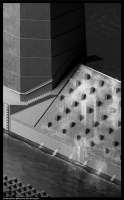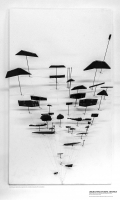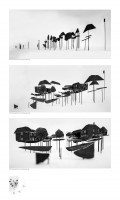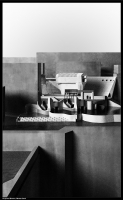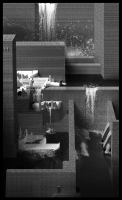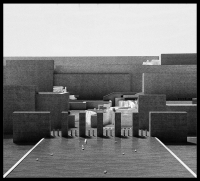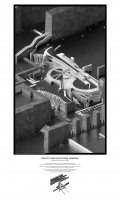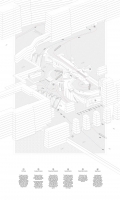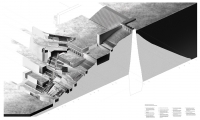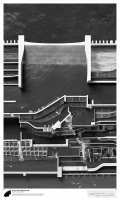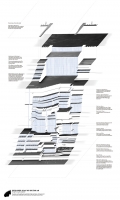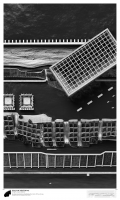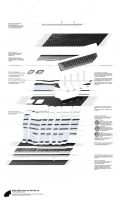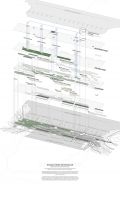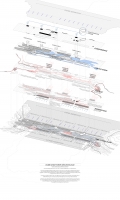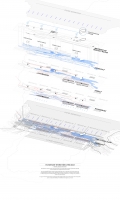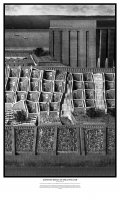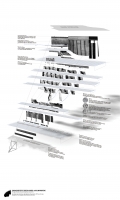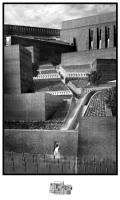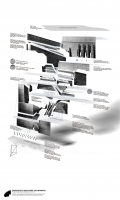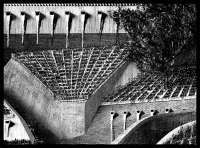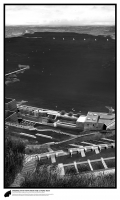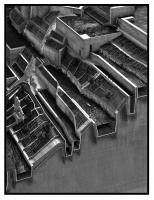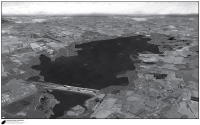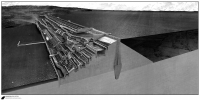PROJECT 2:// The Living Dam
(2014)
A proposal for the construction of Lake Stew, and a better typology of dam.
In response to the UK’s imminent water crisis, brought through an increase in population, water usage and the looming realisation of Peak Water, the British Government registers the severity and urgency of the UK’s water needs, and in response to resist drought, scarcity and starvation by 2025, it has proposed that a system of infrastructural devices are required to maintain hydrological self-sufficiency within the UK.
It is my proposal that Stewartby Reservoir, The Living Dam, and the wider ecological area form an initial investigation into the feasibility of creating new reservoirs within the UK.
Much of the existing hydrological infrastructure in the UK can be traced back to the mid-nineteenth century when prototypical large dams (Lake Vyrnwy) were created in response to the growing need of the Victorian Industrial Cities. The scale of the infrastructural system was largely adequate for much of the twentieth century, however real term spending reductions from the 1980's and rising environmental legislation led the water companies to invest in decreasing wastage, rather than increasing the gross supply. Coupled with the increasing despondency towards dam creation (in light of the controversy surrounding the 'large dams' of the 20th century and the environmental and ecological concerns of pressure groups such as the 'Group Against Reservoir Development' and the damming reports of the 2000 Report by the World Commission of Dams and more recently a 2014 study by Oxford University entitled: Do large dams ever make sense?), the UK has struggled to garnish public support for these essential infrastructures (the last public water supply reservoir built in the UK was at Carsington in 1992) leading to its current water crisis.
Clearly, there is discontent for the current model of dam.
Whilst society and ecology have steadily crept back into the consciousness of British dam creators after a century of exclusion under the hysteria of large dams, encouraged by social-political attitudes and the rising environmentalism movement, current efforts of integration are focused around the reservoirs as means of appeasing the developments.
The attitudes towards dam development however, have stagnated, and may in fact be inherent in the typology itself. Adapted from the prototypical dam at Lake Vyrnwy, modern dams, over 100 years after Vyrnwy still share many similar underlying traits: Dislocation from Society, Segregation and Imposition into its Context, Specialisation of Service and Ownership, and Single-mindedness of Aesthetic and Function.
The utilisation of the vast redundant mass, inherent in inefficient dam walls, may provide the solution to readdressing our social relations with the essential hydraulic infrastructures. If the traditional ‘divisive wall’ mentality can be physically traversed, society, on the face between two states (civilisation and it’s resource), could begin to better understand waters use and function.
The modern integration of civilisation and their infrastructures was first coined by Paulo Soleri and Arcology proposed a highly integrated and compact three-dimensional urban form that is the opposite of urban sprawl with its inherently wasteful consumption of land, energy resources and time, and tendency to isolate people from each other and the community. In many ways, a dam has the potential to become the idiom of an Arcology, however the current insular and increasingly specialist nature of dam engineering has isolated the profession, and with it, the potential to question the integration of society and ecology within the structures.
For these reasons, my proposal of 'The Living Dam' is towards a new typology of dam - away from the image of solitary hydrological infrastructures, and towards a model which is not only integral but also integrated with society, which may help alter the public perception of the essential infrastructures and reduce many of the negative consequences associated with dam management.
A ‘useful pyramid’ for the 21st century.
Whilst providing a store for the national asset of water, the project simultaneously provides a series of tiers, terraces, weirs and platypuses which house a series of beneficial ecologies such as reedbed systems, watercress fields, ponds, lakes and elevated fruit gardens for the water to flurry and flow through, building upon the technology of the Living Machine which segregates wetland ecologies into useful components for accelerated water filtration. The ecologies maintained within the dam go beyond the bucolic, and provide purification and filtration of the water beyond EU drinking water directive 98/83/EC as well as nourishing foods for the occupants to maintain and harvest.
At the lower tiers of the Living Dam, where the water is at its purest, plots for a community for 10,000 inhabitants are provided. The community’s occupation is in the intensive maintenance of the ecologies and the considered management and distribution of water both for the inhabitants and the wider environment. Living is incentivised by reduced utility rates (catered through the community’s immediacy to its water source and hydro-electric source), initially low land prices, the sense of community and the advantageous views across the lower reservoir and Bedford provided by the terraces of the Dam. Quality of water is paramount, and should an inhabitant unsatisfactorily maintain the ecosystem, contaminated water will pass through their home invoking a release clause, evicting them from the dam.
Together, with the integration of ecology, society and infrastructure, the Living Dam is a physical model of a modern 'hydraulic civilisation'; a community and society sustained and dependant on its control, management and utilisation of water.
Through the ideals of The Living Dam, it is hoped that our cultural attitude towards their creation will be re-addressed and that society will be capable of living with dams.
